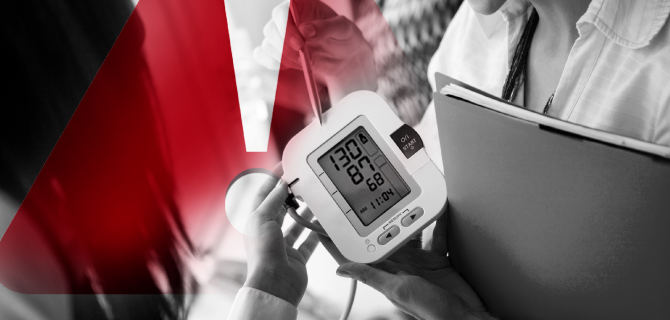Chiari malformation is a condition where brain tissue extends into the spinal canal. This happens because of a structural defect in the skull, which can put pressure on the brain and spinal cord. There are several types of Chiari malformation, with Type I being the most common. It is important to understand the symptoms and complications associated with Chiari malformation, as they can significantly impact a patient’s quality of life.
One area of concern is whether Chiari malformation can cause low blood pressure, or hypotension. Low blood pressure can lead to dizziness, fainting, and fatigue. In this article, we will explore the relationship between Chiari malformation and low blood pressure, examining the mechanisms involved, symptoms, diagnosis, and potential treatments.
What Is Chiari Malformation?
Chiari malformation occurs when the cerebellum, the part of the brain that controls coordination and balance, is pushed down through the foramen magnum—the opening at the base of the skull. This can lead to various neurological symptoms due to the compression of surrounding structures.
Types of Chiari Malformation
Type I: The most common form, often discovered incidentally. It typically causes no symptoms or mild ones, such as headaches.
Type II: More severe and often associated with spina bifida. It usually presents more significant symptoms, including motor and sensory deficits.
Type III: A rare and severe form where the cerebellum protrudes through an abnormal opening in the skull.
Type IV: A rare condition where the cerebellum is underdeveloped.
Symptoms of Chiari Malformation
Symptoms can vary widely among individuals and may include:
Headaches, especially after coughing or straining
Neck pain
Dizziness or balance problems
Numbness or tingling in the hands or feet
Vision problems
The Link Between Chiari Malformation And Low Blood Pressure
Low blood pressure, or hypotension, is defined as a reading of less than 90/60 mmHg. Symptoms include dizziness, lightheadedness, fainting, and fatigue. While low blood pressure can result from various factors, it is essential to explore if Chiari malformation is one of them.
Potential Mechanisms
1. Cerebrospinal Fluid Dynamics
Chiari malformation can affect the flow of cerebrospinal fluid (CSF).
The cerebellar herniation can obstruct CSF pathways, potentially leading to a condition known as intracranial hypertension.
This condition can have a paradoxical effect on blood pressure regulation. If the pressure in the skull is altered, it may influence the systemic vascular resistance and result in low blood pressure.
2. Autonomic Dysfunction
The autonomic nervous system controls involuntary bodily functions, including blood pressure regulation. Chiari malformation can affect the brainstem, where autonomic centers are located. If the brainstem is compressed, it may lead to dysregulation of blood pressure. This autonomic dysfunction can manifest as low blood pressure episodes, especially when changing positions (orthostatic hypotension).
3. Pain and Stress Responses
Chronic pain from Chiari malformation can lead to stress responses in the body. This may trigger the release of stress hormones, which can have complex effects on blood pressure. In some cases, prolonged stress responses may lead to reduced blood pressure.
Clinical Evidence
While direct evidence linking Chiari malformation to low blood pressure is limited, case reports have documented instances of hypotension in patients with Chiari malformation. These reports suggest that it is plausible for Chiari malformation to contribute to blood pressure issues, although more research is necessary to establish a direct causal relationship.
Diagnosing Chiari Malformation
Medical History and Symptoms
Diagnosing Chiari malformation typically starts with a detailed medical history and an assessment of symptoms. Physicians will ask about headache patterns, dizziness, and any other neurological symptoms.
Imaging Studies
Magnetic Resonance Imaging (MRI) is the primary tool for diagnosing Chiari malformation. An MRI provides detailed images of the brain and spinal cord, allowing doctors to assess the extent of cerebellar herniation and its potential effects.
Evaluating Blood Pressure
When assessing for low blood pressure, healthcare providers may conduct various tests, including:
Blood Pressure Monitoring: Regular monitoring to evaluate fluctuations.
Tilt Table Test: This test measures how blood pressure responds to changes in position.
Treatment Options
Managing Chiari Malformation
The treatment for Chiari malformation largely depends on the severity of symptoms. Some patients may require no treatment at all, while others may benefit from:
Medications: Pain relief medications can help manage headaches and discomfort.
Physical Therapy: This can assist with balance and coordination issues.
Surgery: In severe cases, decompression surgery may be performed to relieve pressure on the brain and spinal cord.
Conclusion
While there is no definitive evidence that Chiari malformation directly causes low blood pressure, the complex interplay of anatomical changes, cerebrospinal fluid dynamics, and autonomic dysfunction may contribute to hypotension in some individuals. Patients with Chiari malformation who experience symptoms of low blood pressure should work closely with their healthcare providers to manage both their neurological condition and blood pressure issues.
Related topics:
- Do Breathing Exercises Lower Blood Pressure?
- How to Deal with Low Bp in Pregnancy?
- Is Trazodone Safe for Heart Patients?

